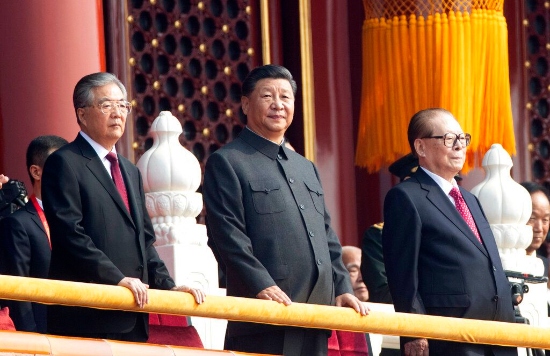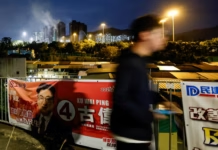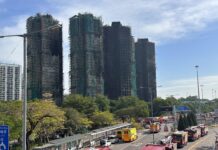70th anniversary celebrations show Xi Jinping’s regime could be entering panic mode
Editorial of Socialist magazine (China edition, issue 54)
On China’s national Day, October 1, President Xi Jinping staged one of the largest military parades ever seen to mark 70 years of the CCP (so-called Communist Party) coming to power. Outwardly, this was a powerful armed show of force to project the regime’s and the nation’s “prosperity and stability”, but it actually reflects a deepening mood of panic within the ruling elite.
Prior to National Day it was as if the whole country was “braced for war”. Many local governments issued statements warning against mass protests. Security measures in the capital surpassed anything seen before. Alongside “normal” precautions such as extensive traffic controls and wholesale arrests of shang fang petitioners, gas supplies were suspended for the areas surrounding Tiananmen Square, effectively banning residents from cooking at home. Residents in neighbourhoods surrounding the square were asked to leave their homes at 11am, and were only allowed to return after the celebrations finished.
Beijing was under an unprecedented lockdown. Large hospitals were prohibited from receiving new inpatients and surgery was not permitted except in emergency cases. A large number of shops, restaurants and entertainment venues were also closed. Even at the public toilets, you needed to show your ID card, state what your needs were, and the estimated time. If you didn’t finish in the expected time, you had to write a 200-word explanation.
The China correspondent for The New York Times based in Beijing, Javier C. Hernández, was also asked to leave his residence near Tiananmen Square. Armed police were stationed in his home for four days. Hernández wrote, “As an American journalist based in Beijing for the past four years, I am accustomed to onerous visa rules, hassles at the airport and arbitrary detentions in the countryside. But never had the police insisted on occupying my home.”
Notwithstanding the dramatic increase in state repression under Xi Jinping’s rule, these latest security measures bordered on the insane. Radio France International said, “It’s not like preparing a grand festival, it’s like preventing a big disaster.” This shows the true state of mind of the CCP dictatorship. The severe economic slowdown, the unprecedented anti-authoritarian mass movement in Hong Kong, and the intractable Sino-US imperialist conflict are combining to present Xi’s regime with an unparalleled crisis.
CCP power struggles resume
Xi’s once all-powerful “strongman” image has begun to wobble. The day after the National Day celebrations, the CCP’s theoretical magazine Qiushi published a speech by Xi given in 2018, in which he warned against “internal strife”. Facing pressures from multiple crises, the CCP’s factional power struggle, which was believed to have been tamed, has again begun to resurface.
When Xi visited Gansu province in late August, state television broadcast footage of a well-dressed man who can be heard shouting, “Long Live the General Secretary” (Xi’s other more senior official title). But in the subsequent report from Xinhua, China’s main government news agency, this was changed to “Long Live the Motherland” and “Long Live the CCP”. As China’s economic and diplomatic squeeze worsens, the internal power struggle within the state is likely to intensify.
Read more ➳ Xi Jinping: A weakened strongman
The Chinese economy has clearly entered a crisis. According to official data by September of this year China’s manufacturing sector (accounting for 35 percent of global manufacturing) had contracted for five consecutive months. The short uptick in growth during March and April was only because of the government’s large-scale economic stimulus, the effects of which have now worn off. And for at least three years, jobs in manufacturing and other industries have been decreasing almost uninterruptedly. In 2019, the unemployment problem seems to be worsening due to a combination of the Sino-US conflict and China’s domestic economic slowdown.

Pork crisis
At the same time, the soaring price of pork is also a major worry for the regime. The outbreak of African swine fever last year has continued to spread, resulting in the culling of huge numbers of pigs (over 100 million) and a shortage of pork, which has pushed prices to record levels. In August this year, Chinese pork prices were 50 percent higher than a year ago. Moreover, it is estimated that pork prices will continue to rise until the Chinese New Year in January next year.
Pork is China’s most important meat type, so the crazy rise in pork prices will not only directly increase the burden of life for the grassroots masses, but also increase the price of other foodstuffs. According to a report in The New York Times, searches on popular search engine Baidu for the term “price increase” increased fourfold during August, while the more academic term “inflation” showed almost no change. This shows that discontent over price increases comes mostly from the grassroots working class and poor, because the increasing cost of food has a greater impact on them.
In order to alleviate the public’s dissatisfaction with the rise in pork prices and the social crisis that may follow, local governments have adopted measures such as pork subsidies and releasing some of their frozen pork stocks, but these steps are just a drop in the bucket. Sluggish economic growth and rising prices threaten to tip China into “stagflation”, which will erode the living standards of the people making it more difficult to continue to tolerate the dictatorship of the CCP.
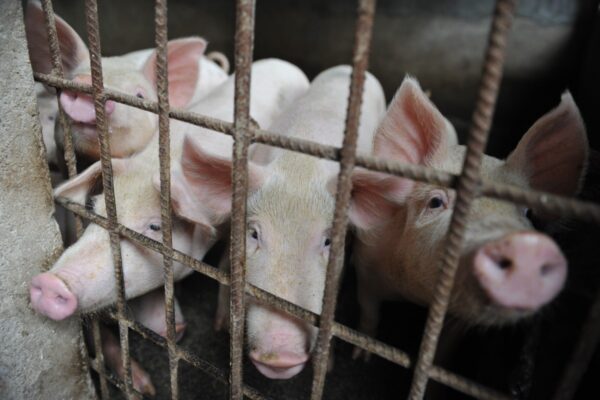
A “very substantial” trade deal?
If the Sino-US trade conflict continues, which it is almost certain to do, the Chinese economy will face even more pressure. Although China and the US reached a temporary trade agreement in Washington on October 11, this does not mark a cessation of the conflict between the two imperialist powers. The deal reached, which postpones proposed US tariff increases to 30 percent, in return for China making bigger purchases of some US farm goods, is anything other than “very substantial” as president Trump characteristically proclaimed.
Read more ➳ US-China trade war: A long conflict?
There is nothing in this deal that could not have been achieved a year ago, without the punishing economic costs both sides have inflicted upon each other. The existing tariffs of both sides remain at the level of 25 percent, while further tariffs threatened by Trump to take effect on December 15 are not included under the terms of this truce.
Ironically, in the US political system, Trump has now become a “moderate” towards China. On October 1, Trump sent a tweet congratulating Xi Jinping, but said nothing about the even more brutal repression of the Hong Kong police that day (for the first time a young protester was shot with live ammunition). The president therefore came under fire from anti-China hawks in both the Republican and Democratic parties.
While the extremely limited trade ‘ceasefire’ reached in Washington may temporarily soothe nervous stock markets, it is clear that the main direction of the Sino-US conflict is towards escalation. We also know that previous temporary truces between the US and Chinese regimes have broken down, sometimes within days, as was the case with the deal reached at the Osaka G20 meeting in June. The scope for de-escalation looks increasingly fragile and limited.
The US president threatened in September to de-list Chinese companies from the US stock market. While this has not been acted upon, it is just one of many measures Washington is considering to block China’s investments and limit its access to US capital markets. The tech war, which is much more serious in terms of its longer term implications for the global economy, continues to escalate with the US side expanding its ‘black list’ of Chinese tech companies that could face sanctions.
Both sides desperate
On October 7, just days before the Washington talks got underway, the US Commerce Department put 28 Chinese public security bureaus and companies on a trade blacklist citing Beijing’s treatment of Uighur Muslims and other Muslim ethnic minorities in Xinjiang. The fact that this action, an extreme provocation in the eyes of Xi’s regime, did not shipwreck the talks in Washington is a sign that both sides are desperate to achieve at least a temporary and partial de-escalation of the conflict, to prevent even greater economic disruption.
Read more ➳ Trump’s trade war draws closer
For the Chinese regime, this willingness to strike a limited deal, even as the US side threatens further trade and financial penalties, underlines the extreme pressures it faces at home. The agricultural concessions from Xi’s negotiators are not huge, but by agreeing to this they are partially giving up a weapon they have been using to pressure the US side (targeting farm goods is a favoured weapon of Beijing as seen in other disputes from Taiwanese fruit, bananas from the Philippines and Norwegian salmon).
Trump has been forced to scale back expectations dramatically and is a long way from the comprehensive resetting of US-China trade that he boasted his aggressive policies would achieve. He now welcomes even a minimal trade deal with China to avoid going into the 2020 elections empty handed.
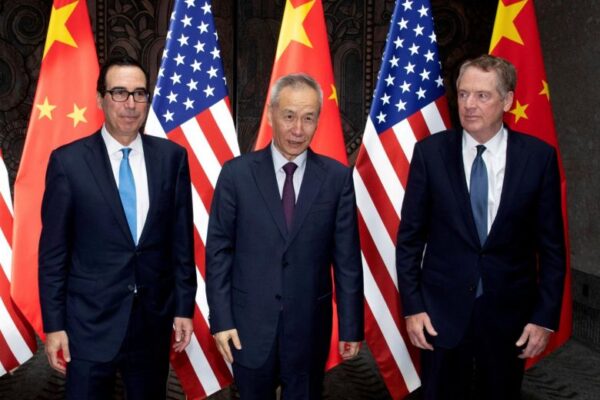
Overthrow capitalism and imperialism
But Trump is no longer fully in control of the process. His anti-China stance has opened a Pandora’s box of powerful and contradictory forces. This is the logic of imperialist capitalism, where a contest between US and Chinese imperialism to decide who rules the planet is inevitable. This can only be prevented by the working class overthrowing capitalism and imperialism through the coming to power of real socialist governments in a number of countries, paving the way for international socialism and democratic planning of the world’s resources.
Such are the speed and volatility of global processes that Trump now risks being attacked as “soft on China” by Democrats and Republicans alike. Trump favours making concessions to China over the black-listing of Huawei Technologies, its biggest tech company, but fierce opposition to this from a coalition of forces on both sides of Congress and from the military industrial complex ties his hands. These are the same forces putting pressure on the president to take a tougher line over Hong Kong, not because they give a damn about democratic rights, but because they see Hong Kong as a useful pawn in their ‘containment’ chess game with China.
Socialist magazine and the CWI explain and warn that the workers’ movement and all movements of the oppressed, such as the youthful democracy protests in Hong Kong, should maintain complete political independence from all the capitalist elites in the current global power struggle.
Trade wars are a way for one gang of capitalist robbers to protect their own ill-gotten gains at the expense of their rivals, while continuing to drive down the rights and livelihoods of the working class and to wreak destruction on an ecosystem that is already close to collapse. Workers urgently need to build their own political alternative to capitalism and nationalism, which is socialist internationalism based on immediate, full democracy and taking the major companies into democratic public ownership. This program is the way forward for the struggles of workers and youth in the US against Trump and his billionaire class and the struggle of the oppressed masses in China against the billionaire CCP dictatorship.

